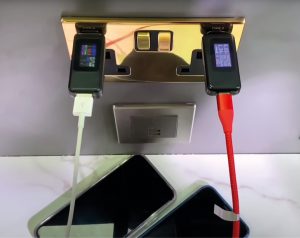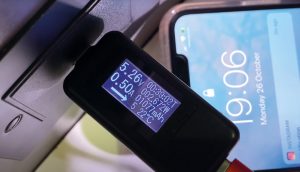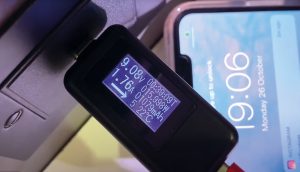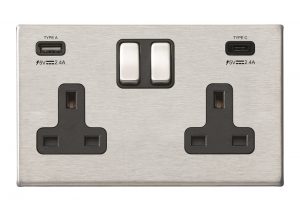We all have those drawers full of odds and ends, and one item that’s sure to have a home there is the block plug-in USB charger. Until now, they’ve come as standard with battery devices that need charging. Eventually, when the drawer gets full, these chargers end up as e-waste. In a move to reduce the impact of e-waste on the environment the European Union is trying to stop manufacturers from providing one of these with every device and move towards a standard USB-type charging connector. One of the first brands to make this change is Apple, which won’t be providing a charging unit with the recently revealed iPhone 12.
But what does this mean for customers and contractors? An increased demand for USB charging ports is anticipated, both for commercial and residential properties. But not all USB connectors were created equal – there are both USB Type A and USB Type C ports. But what’s the difference?

Recap: USB-A vs USB-C
We may think we know the USB connector as most electronic devices such as laptops and computers will have a USB port, but more specifically this is USB Type A, or USB-A as it’s increasingly being known. This has a reasonably large physical connector and can only be inserted into a port in one orientation. This requires a USB 2.0 connection for charging, which offers up to 2.5W and will charge your smart phone overnight at a reasonably slow and steady pace.
However, a new standard that enables significantly faster charging is on the horizon – the USB Type C, or USB-C. Unlike USB-A, USB-C has the same connector pins on either side, so can be inserted into a charging point either way up and is physically much smaller than the USB-A variety. More importantly, it supports new USB standards, such as USB 3.1 and USB PD (Power Delivery).
USB 3.1 allows extremely fast data transfer of up to 10 Gbps, while USB PD enables power transfer of 100W for rapid charging. Not only can a device receive this increased power, but as it’s bidirectional it can also send power, too.
Unlike the early days of mobile phones where each brand had its own unique charging cable, USB-C is set to become standard across new technologies. As mentioned, Apple has done away with the charging block and adopted the USB-C standard for its upcoming products, as have more than 700 technology companies including Dell, Google, HP, Intel, Microsoft and Samsung.

Charging ahead
To meet the demand of the new standard while also supporting the charging of legacy devices, companies manufacturing electrical wiring accessories, such us, are producing sockets with combined USB-A and USB-C charging ports. These allow existing devices to be charged, but ensure functionality is pre-emptively installed for the next wave in technological development. And it’s these solutions that provide a business opportunity for today’s electrician to stay ahead of demand.
Tests also confirmed that there is no issue with power sharing between sockets when charging: if two devices are plugged in then they are both getting the correct and equal charge rather than one taking additional power. However, currently (and with no pun intended!) there are restrictions on the charging capability from a 13A socket. Faster charging needs more power, more rapidly.

To enable this, a larger charging module is required on the back of the socket. At present, this is not possible due to the unit needing to be packaged within the restrictions of the standard 47mm deep back box. But as USB-C becomes standard, USB-A ports will become redundant and this will free up space in the unit for larger charging modules that can deliver the power USB-C is capable of receiving.
Power up
In the meantime, it’s possible to install a Euro Module that will deliver a higher rate of charge. This is not a 13A socket outlet, but a combination plate designed to deliver additional power that can support higher capacity devices. It is a standard 50 x 50 unit and is ideal for charging high performance devices, such as the new MacBook Pro.
Offering both USB standards, when a device is plugged into the Euro Module it will negotiate the power output with the charger. For instance, if it’s plugged into the Type C port then it will accept the full 45 watts on offer, or will let the charger know if it requires less. The current and the voltage will adjust to enable optimum charging. The same applies to the 18W Type A socket.
A thirsty device that benefits from the Euro Module is the iPad Pro. When plugged into a USB-C port in a standard 13A socket, the iPad Pro is effectively on trickle charge – it’s not able to get the power required for a proper charge as the socket is not fit for this purpose. However, when plugged into the Euro Module it can increase its charge and power up effectively.












